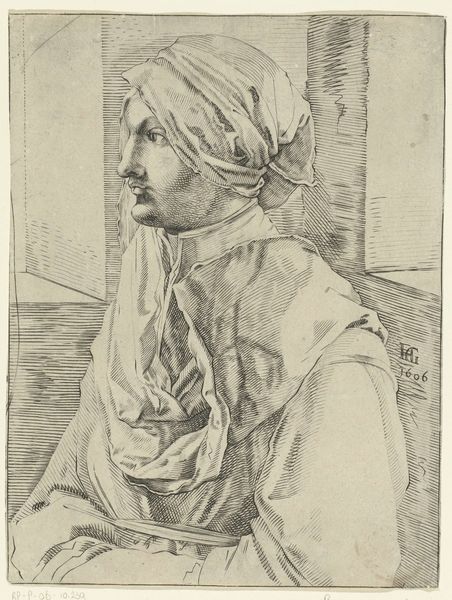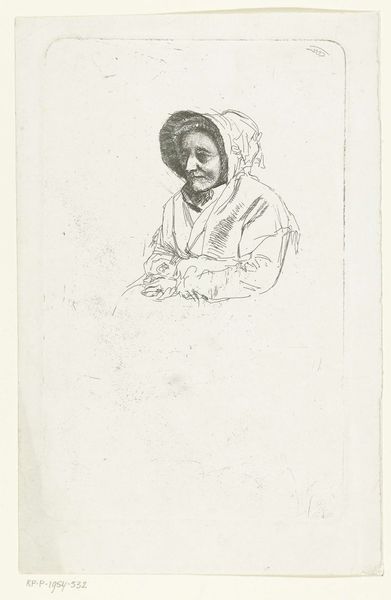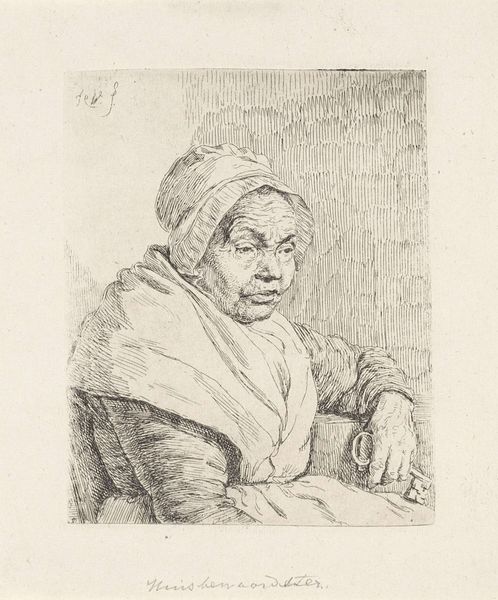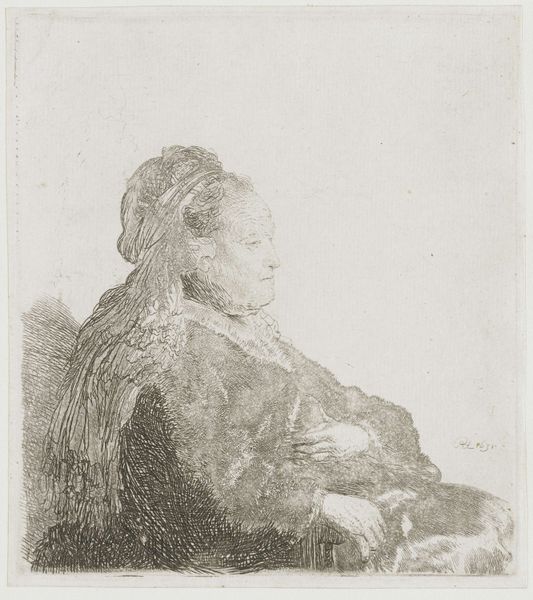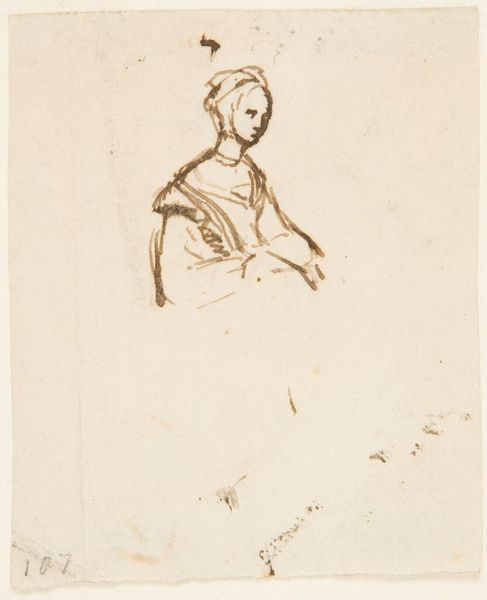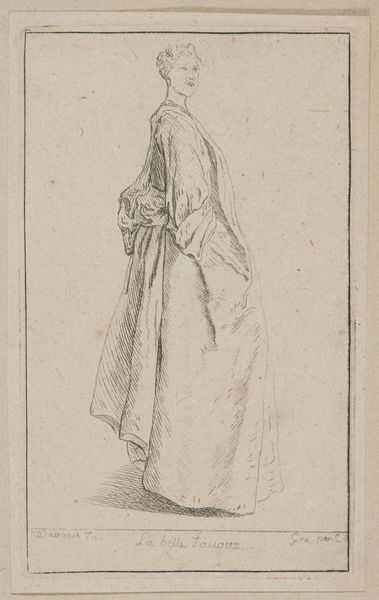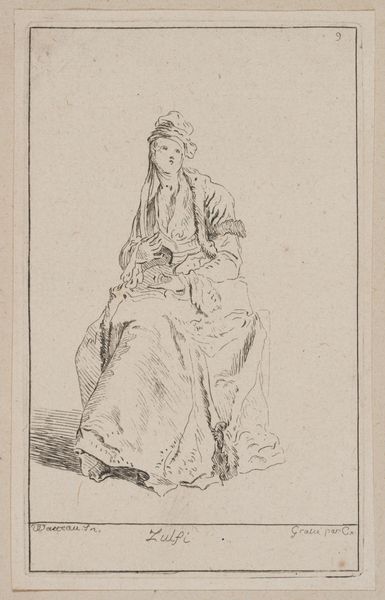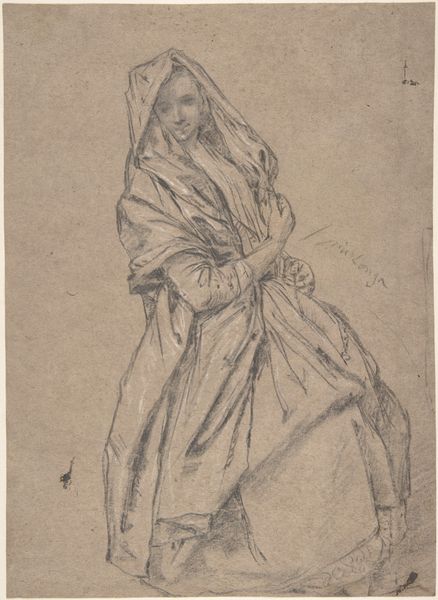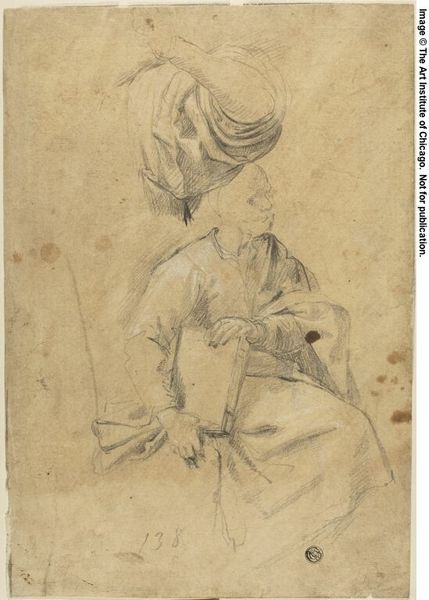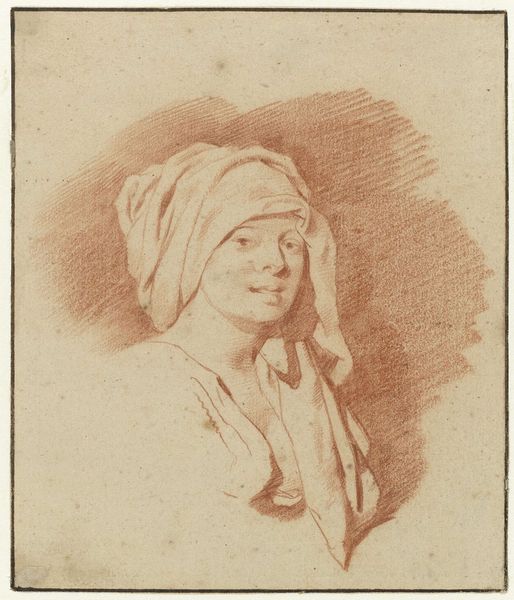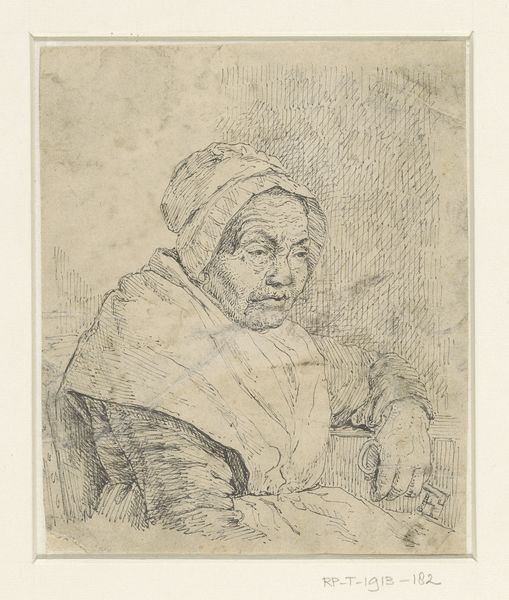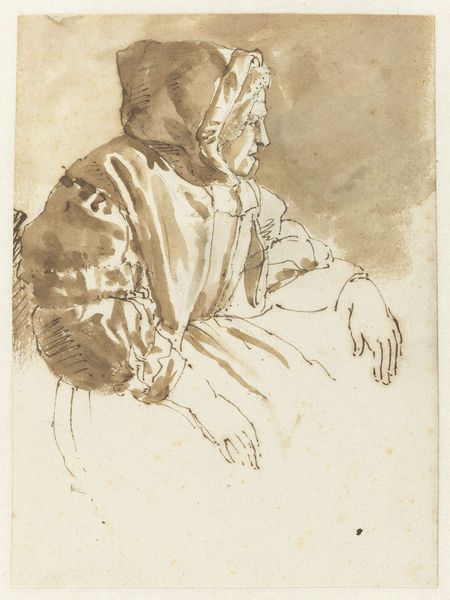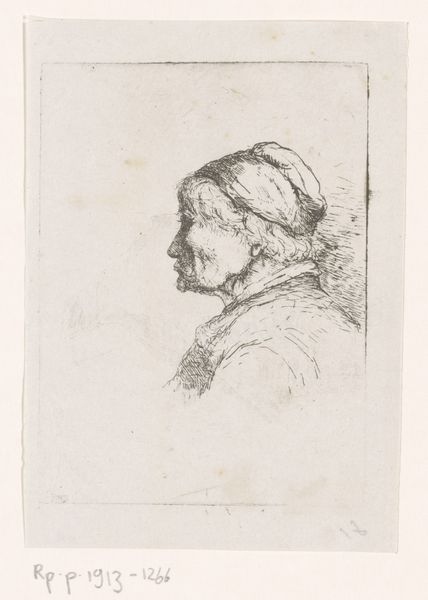
Copyright: National Gallery of Art: CC0 1.0
Editor: David Young Cameron’s etching, "Old Age," created in 1891, depicts an elderly woman in profile. There’s a softness to the lines, yet the weight of her years is palpable. How do you interpret the symbolism and emotional quality conveyed in this print? Curator: The woman’s head covering immediately speaks to specific cultural contexts – a visual marker of her position, perhaps marital status, religiosity, or regional identity. Consider the deliberate use of the profile; it distances us, but it also invites quiet contemplation. How does the visible texture of the etching contribute to the emotional weight you perceive? Editor: I think the fine lines and hatching add to the sense of vulnerability. It’s as though the artist is meticulously revealing every wrinkle, every line etched by time, without embellishment. Is that part of a larger visual language? Curator: Precisely. Think of portraiture throughout history – the powerful, idealized leaders versus more intimate, naturalistic depictions. Cameron seems to be invoking a tradition of sober realism, inviting us to meditate on mortality and memory, making her a symbol of enduring wisdom, connecting her to generations past. But where do you see the possibility for continuity? Editor: I see that continuity in her very posture – upright, contained, resilient. Even in old age, there’s strength. It’s in the careful depiction of the garments, not luxurious, but clearly cherished and carefully maintained. Curator: Yes, exactly! These garments hint at an untold personal history. By focusing on these humble details, Cameron transforms a single, aging woman into a universal symbol of endurance. It makes me question who in my own family carries similar weight? Editor: I agree, it makes you wonder about the stories she could tell and who's going to carry those forward. Curator: It’s powerful how a simple etching can open up these avenues for reflection.
Comments
No comments
Be the first to comment and join the conversation on the ultimate creative platform.
